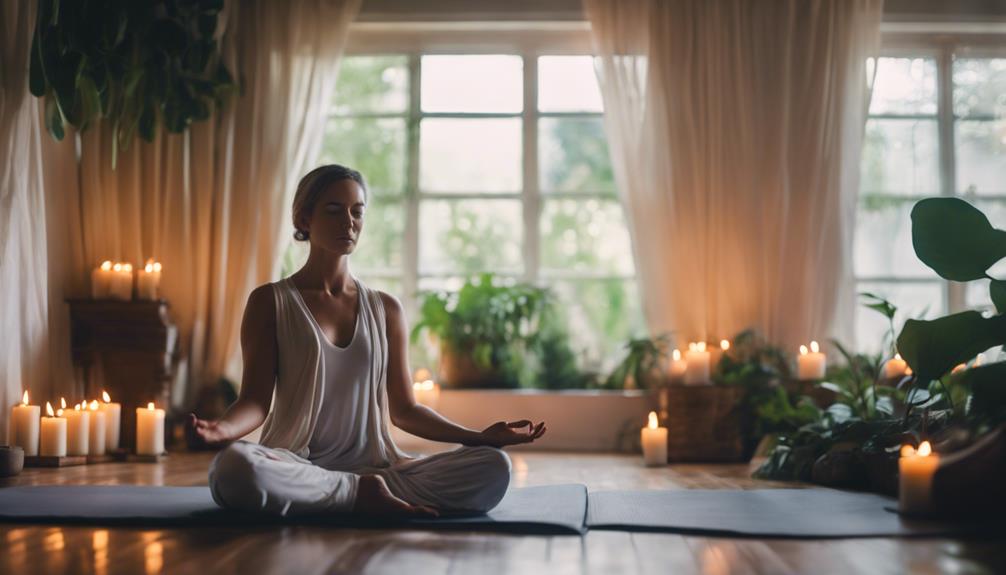What Do You Need For Yoga

Yoga is a transformative practice that not only enhances physical health but also nurtures mental and spiritual well-being. If you’re looking to start your yoga journey or want to deepen your practice, understanding what you need for yoga can be incredibly beneficial. This guide will walk you through the essential items and considerations to ensure you get the most out of your yoga experience.
Understanding the Basics: What is Yoga?
Before diving into what you need for yoga, it’s essential to understand what yoga is. Originating from ancient India, yoga is a holistic discipline that combines physical postures (asanas), breathing techniques (pranayama), and meditation to promote overall well-being. The practice can be tailored to suit individuals of all ages and fitness levels, making it accessible and beneficial for everyone. Whether you’re looking to improve flexibility, reduce stress, or enhance your overall health, yoga can help you achieve your goals.
Essential Gear: The Yoga Mat
One of the most critical items you need for yoga is a high-quality yoga mat. A good yoga mat provides the necessary traction and cushioning to support your body during various asanas. When choosing a mat, consider factors such as thickness, material, and texture. A standard yoga mat is typically about 1/4 inch thick, but thicker mats are available for those who prefer extra cushioning. Look for mats made from eco-friendly materials, such as natural rubber or TPE, to minimize your environmental impact while practicing yoga.
Comfortable Clothing: Dress for Success
What you wear during yoga can significantly affect your practice. Comfortable, breathable clothing that allows for a full range of motion is essential. Look for yoga-specific attire made from moisture-wicking fabrics to keep you dry and comfortable. Popular choices include leggings, tank tops, and loose-fitting shirts. Avoid clothing with zippers or buttons, as they can be distracting and uncomfortable during your practice. Remember, the goal is to feel free and unrestricted in your movements.
Related Posts:
Supporting Your Practice: Yoga Props
While not strictly necessary, yoga props can enhance your practice, especially if you’re a beginner or working on advancing your skills. Common props include yoga blocks, straps, and bolsters. Yoga blocks help you achieve proper alignment in poses and can provide support in challenging positions. Straps are excellent for deepening stretches and improving flexibility, while bolsters can be used for support in restorative poses. Investing in these props can make your practice more comfortable and enjoyable.
Nourishing Your Body: Hydration and Nutrition
What you need for yoga extends beyond physical items. Proper hydration and nutrition play a crucial role in your ability to practice effectively. Drinking water before and after your session is vital, as it helps maintain hydration levels. Additionally, consider what you eat in the hours leading up to your practice. A light snack containing carbohydrates and protein, such as a banana or a handful of nuts, can provide the energy you need without weighing you down. Avoid heavy meals close to your practice time to prevent discomfort during your session.
Creating the Right Environment: Space for Yoga
Your physical environment can significantly impact your yoga experience. Creating a dedicated space for yoga at home can help you establish a consistent practice. Ideally, find a quiet area where you can spread out your mat without distractions. Consider adding elements that promote relaxation, such as candles, plants, or soft lighting. If you’re practicing in a studio, arrive early to secure a spot where you feel comfortable and can focus on your practice without interruptions.
Mindset Matters: Mental Preparation for Yoga
What you need for yoga also includes mental preparation. Yoga is as much about the mind as it is about the body. Before you step onto your mat, take a moment to set an intention for your practice. This could be a word, phrase, or goal you want to focus on during your session. Cultivating a positive mindset will enhance your experience and help you connect deeper with your practice. Remember, yoga is a journey, and being present in the moment is key to fully enjoying the benefits it offers.
Finding Guidance: Classes and Resources
Finally, if you’re new to yoga or looking to enhance your practice, consider seeking guidance through classes or online resources. Many studios offer beginner classes that can help you learn the fundamentals of yoga in a supportive environment. Alternatively, numerous online platforms provide video tutorials and guided sessions that cater to various skill levels. Engaging with a community of fellow practitioners can also provide motivation and encouragement as you explore what you need for yoga.
Conclusion
In conclusion, embarking on your yoga journey requires more than just a mat and some stretchy pants. Understanding what you need for yoga—from physical gear to mindset preparation—can set you up for success. By investing in quality equipment, creating a supportive environment, and nurturing your body and mind, you can experience the profound benefits that yoga has to offer. Whether you practice at home or in a studio, remember that yoga is a personal journey, and the most important element is to enjoy the process.What Is Yoga BarreDo You Have To Be Certified To Teach Yoga